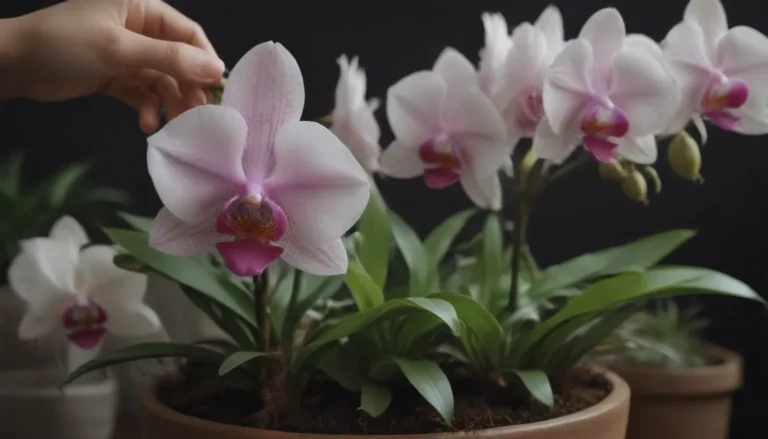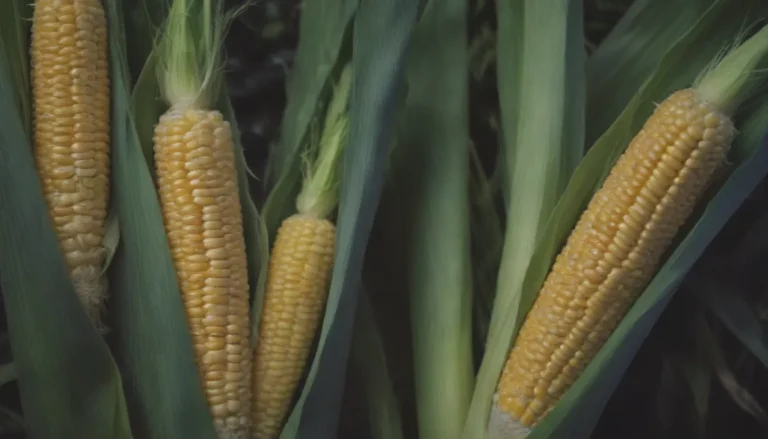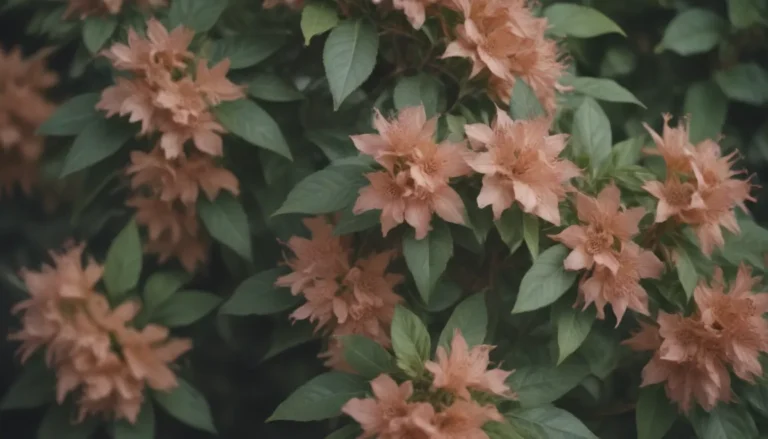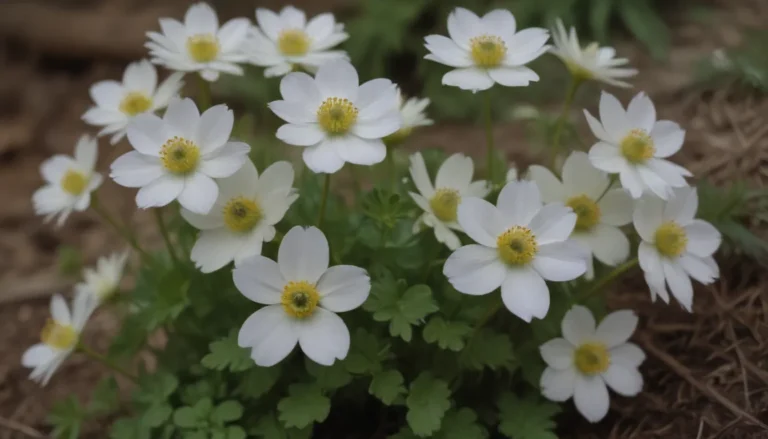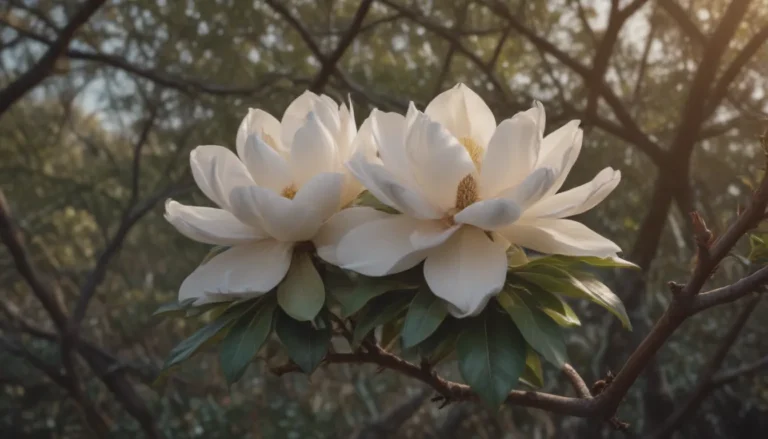Cultivating a Pine Tree Paradise: A Comprehensive Guide to 40 Unique Pine Varieties
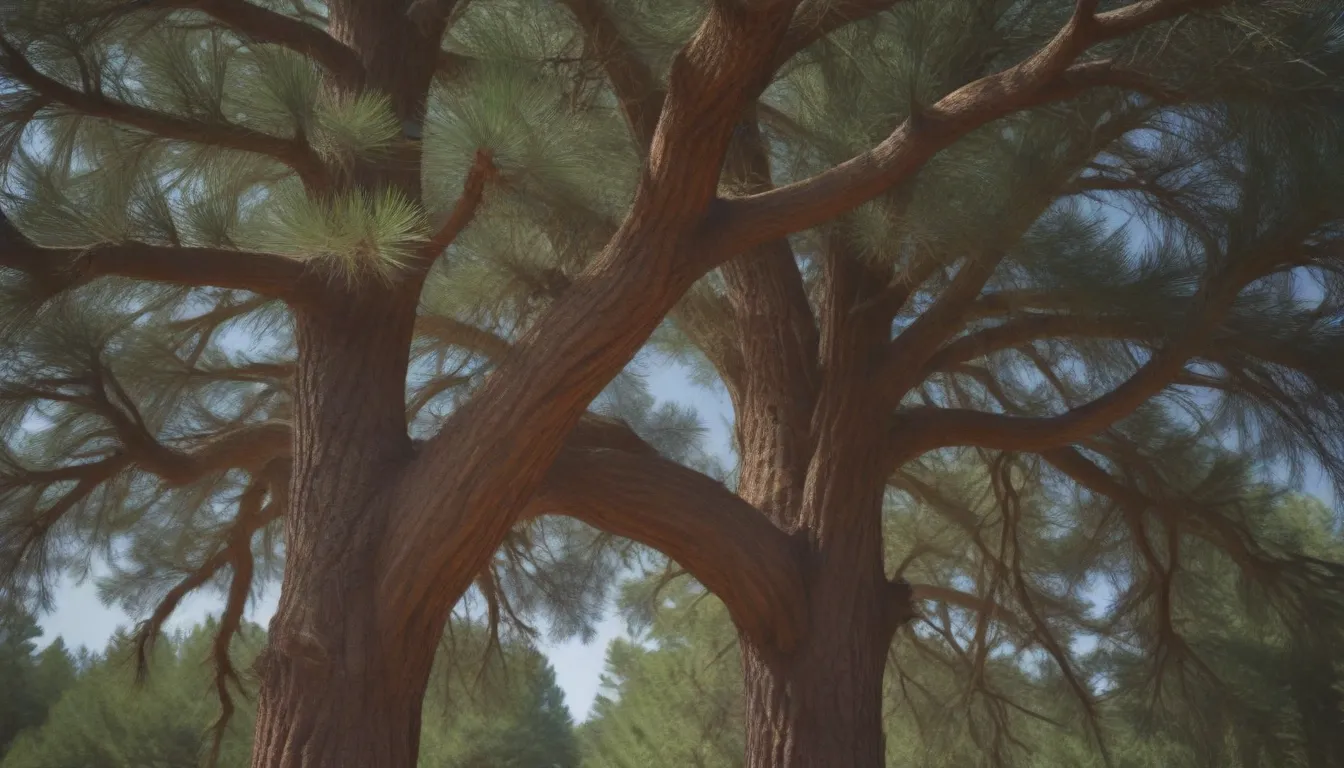
Are you ready to transform your landscape into a pine tree paradise? Pine trees, belonging to the Pinus genus of plants, are a diverse group of evergreen conifers that offer year-round color and beauty to any environment. With over 120 types of pine trees worldwide, there is a vast array of options to choose from when selecting the perfect pine for your garden.
In this in-depth guide, we will explore 40 common types of pine trees, providing valuable information on how to identify them, tips for growing them successfully, and whether they are commonly used as landscape trees. Whether you are a seasoned gardener or a beginner looking to add some greenery to your outdoor space, this guide will help you navigate the wonderful world of pine trees.
How to Identify Pine Trees
Identifying pine trees can be a fun and rewarding experience. There are several features that can help you distinguish one type of pine tree from another:
- Needle Groupings or Color: Pay attention to the arrangement and color of the needles.
- Bark: Look at the texture and color of the tree’s bark.
- Cone: Examine the size, shape, and color of the pine cones.
- Growth Habit: Notice the overall shape and structure of the tree.
- Crown Shape: Study the crown shape of the tree, whether it is conical, round, or irregular.
- Size: Consider the mature height and width of the tree.
For beginners, height can be an easy feature to start with. Pines vary in size, from dwarfs to giants, so knowing the mature height of a tree can help you narrow down your choices.
Eastern White Pine (Pinus strobus)
The Eastern White Pine is a fast-growing, long-lived pine that is widely cultivated for both timber and landscape purposes. With its soft, bluish-green needles and smooth gray bark, it is a popular choice for Christmas trees. This large tree can also be pruned to serve as a hedge shrub, making it a versatile option for any garden. However, it is important to note that the Eastern White Pine may struggle in polluted environments.
- Native Area:
- USDA Growing Zones:
- Height:
- Sun Exposure:
Aleppo Pine (Pinus halepensis)
The Aleppo Pine, also known as Jerusalempine, is a drought-resistant tree that thrives in hot climates. With its light yellowish-green needles and conical open-crowned shape, this pine tree is a valuable landscape specimen. While it has been considered invasive in some regions, it is a sturdy and durable tree that can tolerate a variety of soil types.
- Native Area:
- USDA Growing Zones:
- Height:
- Sun Exposure:
Austrian Pine (Pinus nigra)
The Austrian Pine, also known as European Black Pine, transforms from a pyramidal shape to a rounded-top specimen when fully mature. This medium- to large-sized conifer can be used as a specimen tree or for screening purposes in the landscape. However, it is important to be aware that the Austrian Pine is susceptible to pest and disease problems, especially in certain regions.
- Native Area:
- USDA Growing Zones:
- Height:
- Sun Exposure:
Bristlecone Pine (Pinus aristata)
The Bristlecone Pine, native to the southern Rocky Mountains, is a slow-growing, long-lived tree that makes a great specimen in the landscape. With its small size and unique appearance, this dwarfish species can be used as a shrub or allowed to grow into a small tree. Also known as Hickory Pine or Rocky Mountain Bristlecone, this tree adds a touch of charm to any garden.
- Native Area:
- USDA Growing Zones:
- Height:
- Sun Exposure:
Canary Island Pine (Pinus canariensis)
The Canary Island Pine is a very large tree that gradually develops a parasol-like canopy as it matures. With its sturdy and durable nature, this tree can tolerate most soil types. However, it does not fare well in cold climates and may not be a common choice for landscape applications.
- Native Area:
- USDA Growing Zones:
- Height:
- Sun Exposure:
Chir Pine (Pinus roxburghii)
The Chir Pine, native to the Himalayas, is a large tree with bunches of long needles that give it a fluffy appearance. While it may not be commonly used in landscape settings, this attractive tree adds a unique touch to any environment. Also known as the Imodipine, the Chir Pine stands out with its distinctive features.
- Native Area:
- USDA Growing Zones:
- Height:
- Sun Exposure:
Coulter Pine (Pinus coulteri)
The Coulter Pine, native to California and northern Baja California, Mexico, is a large tree with an irregular crown and heavy cones. With various common names such as Big Cone Pine, Nut Pine, and Slash Pine, this tree grows well in different soil types but prefers rocky soil at medium altitudes. While it is sometimes used as an ornamental tree, the Coulter Pine adds a touch of natural beauty to parks and gardens.
- Native Area:
- USDA Growing Zones:
- Height:
- Sun Exposure:
Foxtail Pine (Pinus balfouriana)
The Foxtail Pine, a rare type of pine tree found in the Sierra Mountains, is a sight to behold in its natural setting. While it is almost never grown as a landscape tree, nature lovers appreciate its beauty when encountered in the wild. With its unique characteristics, the Foxtail Pine adds a touch of wilderness to any environment.
- Native Area:
- USDA Growing Zones:
- Height:
- Sun Exposure:
Gray Pine (Pinus sabiniana)
The Gray Pine, found in the low foothills of the California mountains, is a tall pine with an unusual forked trunk. With several common names such as Foothill Pine, California Foothill Pine, and Digger Pine, this tree is rarely planted in landscape applications. Despite its limited use in gardens, the Gray Pine stands out with its distinctive features.
- Native Area:
- USDA Growing Zones:
- Height:
- Sun Exposure:
Italian Stone Pine (Pinus pinea)
The Italian Stone Pine, also known as the Umbrella Pine, hails from the Mediterranean region. With its attractive umbrella-shaped form and edible pignoli nuts, this tree is a classic addition to any landscape. While it may not be commonly grown in the US, the Italian Stone Pine adds a touch of exotic beauty to gardens in Mediterranean climates.
- Native Area:
- USDA Growing Zones:
- Height:
- Sun Exposure:
Jack Pine (Pinus banksiana)
The Jack Pine, also known as the Gray Pine, may not be the most visually appealing pine tree, but its tolerance for poor soils makes it a good choice for windbreaks in rural settings. With its slender, curved cones and unique appearance, the Jack Pine adds a touch of rugged charm to any environment. While it is considered invasive in some regions, this species has its own unique appeal.
- Native Area:
- USDA Growing Zones:
- Height:
- Sun Exposure:
Japanese Black Pine (Pinus thunbergii)
The Japanese Black Pine, also known as Black Pine, is an attractive conical-shaped pine that can serve as a good specimen tree in the landscape. With its versatility and unique appearance, this tree is also popular in the art of bonsai. However, it is important to note that the Japanese Black Pine is considered invasive in certain regions, so caution should be exercised when planting it.
- Native Area:
- USDA Growing Zones:
- Height:
- Sun Exposure:
Japanese White Pine (Pinus parviflora)
The Japanese White Pine is a medium-sized tree that is widely used as a specimen tree in landscaping. With its attractive spreading branch pattern and fine bluish foliage, this slow-growing conifer adds a touch of elegance to any garden. Ideal for bonsai enthusiasts, the Japanese White Pine stands out with its distinctive features.
- Native Area:
- USDA Growing Zones:
- Height:
- Sun Exposure:
Jeffrey Pine (Pinus jeffreyi)
The Jeffrey Pine, a very tall tree with sparse foliage, is rarely grown in landscape applications. With its tolerance for drought and poor soils, this unique tree adds a touch of rugged beauty to any environment. While it may not be suitable for all landscapes, the Jeffrey Pine stands out with its distinctive features.
- Native Area:
- USDA Growing Zones:
- Height:
- Sun Exposure:
Lacebark Pine (Pinus bungeana)
The Lacebark Pine, known for its exfoliating bark that resembles that of a sycamore tree, is a slow-growing tree that makes a great landscape specimen. With its attractive bark and unique appearance, this tree adds a touch of beauty to any garden. While it may take some time to reach maturity, the Lacebark Pine is well worth the wait for its unique features.
- Native Area:
- USDA Growing Zones:
- Height:
- Sun Exposure:
Limber Pine (Pinus flexilis)
The Limber Pine is a highly adaptable tree that thrives in difficult soils. With its ability to grow well in poor conditions, this tree is ideal for challenging landscapes. Whether planted in landscapes or used for erosion control, the Limber Pine adds a touch of resilience to any environment.
- Native Area:
- USDA Growing Zones:
- Height:
- Sun Exposure:
Loblolly Pine (Pinus taeda)
The Loblolly Pine, native to swampy areas in the Southeast, is a tree that thrives in damp, boggy soil conditions. With its straight trunk and towering crown, this tree adds a touch of elegance to landscapes in the region. While it may not be suitable for all environments, the Loblolly Pine stands out with its distinctive features.
- Native Area:
- USDA Growing Zones:
- Height:
- Sun Exposure:
Lodgepole Pine (Pinus contorta)
Depending on the subspecies and variety, the Lodgepole Pine can be a shrub or tree with twisted and contorted trunks. Known by various common names such as Beach Pine, Coast Pine, and Rocky Mountain Lodgepole Pine, this species is well-suited to windy and barren sites. With its unique adaptations, the Lodgepole Pine is a valuable addition to landscapes facing challenges.
- Native Area:
- USDA Growing Zones:
- Height:
- Sun Exposure:
Longleaf Pine (Pinus palustris)
The Longleaf Pine is a tall, upright tree with long needles that give it its common name. With its slow growth rate and attractive bark, this tree is prized for its ornamental value. Whether used for crafts or as a landscape tree, the Longleaf Pine adds a touch of charm to any environment. Despite its slow growth, this tree is well worth the wait.
- Native Area:
- USDA Growing Zones:
- Height:
- Sun Exposure:
Luchu Pine (Pinus luchuensis)
The Luchu Pine, a large tree with angled branches and a flat crown, is a rare species originally found only in Okinawa. With its unique growth habit and distinctive appearance, this tree adds a touch of exotic beauty to landscapes. Whether planted in shoreline settings or used as a focal point in gardens, the Luchu Pine stands out with its unique features.
- Native Area:
- USDA Growing Zones:
- Height:
- Sun Exposure:
Maritime Pine (Pinus pinaster)
The Maritime Pine, known for its attractive upswept branches and conical crown, is a valuable landscape specimen. With its tolerance for dry, sandy soil, this tree is well-suited to coastal environments. Whether planted as a single specimen or in groupings, the Maritime Pine adds a touch of elegance to any garden. Also known as Cluster Pine or French Turpentine Pine, this species is a versatile choice for many landscapes.
- Native Area:
- USDA Growing Zones:
- Height:
- Sun Exposure:
Mexican Weeping Pine (Pinus patula)
The Mexican Weeping Pine, known for its drooping tufts of needles, adds a unique touch to any landscape. With its weeping appearance and striking features, this tree stands out as a specimen in gardens. Whether known as Jelecote Pine or Patula Pine, this species adds a touch of charm to any environment.
- Native Area:
- USDA Growing Zones:
- Height:
- Sun Exposure:
Monterey Pine (Pinus radiata)
The Monterey Pine, also known as Radiata Pine, is a large-bodied tree with a thick trunk and branches. With its fast growth rate and conical to domed shape, this conifer adds a touch of elegance to landscapes. Whether used for windbreaks or as a single specimen, the Monterey Pine is a versatile choice for many environments. Its native to the foggy coastal areas of California makes it an excellent choice for coastal gardens.
- Native Area:
- USDA Growing Zones:
- Height:
- Sun Exposure:
Mugo Pine (Pinus mugo)
The Mugo Pine, a dwarf, creeping shrub or small tree, is known for its hard, heavy branches. With its ability to function as a ground cover or erosion control, this species adds a touch of versatility to landscapes. Whether planted in mass or used as a single specimen, the Mugo Pine is a valuable addition to any garden.
- Native Area:
- USDA Growing Zones:
- Height:
- Sun Exposure:
Pitch Pine (Pinus rigida)
The Pitch Pine, known for its high resin content, may not be the best choice for low-maintenance landscaping. With its crooked growth habit and shabby appearance, this tree may require regular maintenance to keep it looking its best. Known for its unique characteristics, the Pitch Pine adds a touch of rustic charm to landscapes.
- Native Area:
- USDA Growing Zones:
- Height:
- Sun Exposure:
Pond Pine (Pinus serotina)
The Pond Pine, also known as Marsh Pine or Bay Pine, holds its seed cones closed for many years before opening them after a fire. With its unique adaptations and ragged appearance, this species may not be highly valued as a landscape tree. Despite its limited use in gardens, the Pond Pine adds a touch of resilience to environments facing fire-prone conditions.
- Native Area:
- USDA Growing Zones:
- Height:
- Sun Exposure:
Ponderosa Pine (Pinus ponderosa)
The Ponderosa Pine, known for its immense size and large, straight trunks, is prized as an ornamental specimen in parks and large landscapes. With its distinctive bark and western yellow pine, this tree adds a touch of elegance to landscapes. Whether used for its ornamental value or commercial purposes, the Ponderosa Pine is a valuable addition to any garden.
- Native Area:
- USDA Growing Zones:
- Height:
- Sun Exposure:
Red Pine, Norway Pine (Pinus resinosa)
The Red Pine, also known as the Norway Pine or Canadian Pine, is a tall, straight tree with a conical crown that becomes rounded with age. With its adaptable nature and northern range, this tree is a good choice for landscapes in cooler climates. Whether known as the Jersey Pine or Virginia Scrub Pine, this species adds a touch of elegance to any environment.
- Native Area:
- USDA Growing Zones:
- Height:
- Sun Exposure:
Sand Pine (Pinus clausa)
The Sand Pine, known for its preference for sandy, well-drained soils, is a medium-sized tree that thrives in shady conditions. With its adaptability to challenging environments and serotinous cones, this species is a good choice for landscapes facing poor soil conditions. Whether known as the Scrub Pine, the Sand Pine adds a touch of resilience to gardens.
- Native Area:
- USDA Growing Zones:
- Height:
- Sun Exposure:
Scots Pine (Pinus sylvestris)
The Scots Pine, also known as Scotch Pine, is a fast-growing, medium-sized tree with a conical or column-shaped habit. With its distinctive brown-red bark and adaptability to various environments, this tree is a good choice for many landscapes. Whether used for its ornamental value or as a Christmas tree, the Scots Pine adds a touch of charm to any garden.
- Native Area:
- USDA Growing Zones:
- Height:
- Sun Exposure:
Single-Leaf Pinyon Pine (Pinus monophylla)
The Single-Leaf Pinyon Pine, a small- to medium-sized tree with flaking bark, is used for its attractive features and cone production. With its difficulty in propagation, this tree may not be widely available in nurseries. Known for its unique bark and adaptability to landscapes, the Single-Leaf Pinyon Pine adds a touch of interest to gardens.
- Native Area:
- USDA Growing Zones:
- Height:
- Sun Exposure:
Sugar Pine (Pinus lambertiana)
The Sugar Pine, known for being the tallest of all pine trees, is prized for its size and distinctive cones. With its impracticality for landscape use due to its sheer size, this tree is best suited for large properties. Despite its limited use in gardens, the Sugar Pine adds a touch of grandeur to any environment. Whether known as the Giant Pine, this species stands out as a majestic addition to landscapes.
- Native Area:
- USDA Growing Zones:
- Height:
- Sun Exposure:
Tanyosho Pine (Pinus densiflora)
The Tanyosho Pine, the most common of all pine trees native to Japan, offers versatility in landscapes. With its dwarf cultivar and adaptability to small yards, this tree is a good choice for foundation plantings and bonsai enthusiasts. Whether known as the Umbrella Pine or Tabletop Pine, the Tanyosho Pine adds a touch of beauty to any garden.
- Native Area:
- USDA Growing Zones:
- Height:
- Sun Exposure:
Tenasserim Pine (Pinus latteri)
The Tenasserim Pine, a medium- to large-sized tree with orange-red bark, is closely related to the Aleppo Pine. With its rounded crown and adaptability to warm climates, this tree is a valuable addition to landscapes in certain regions. Whether used for its ornamental value or as a specimen tree, the Tenasserim Pine adds a touch of elegance to any environment.
- Native Area:
- **USDA Growing Zones
